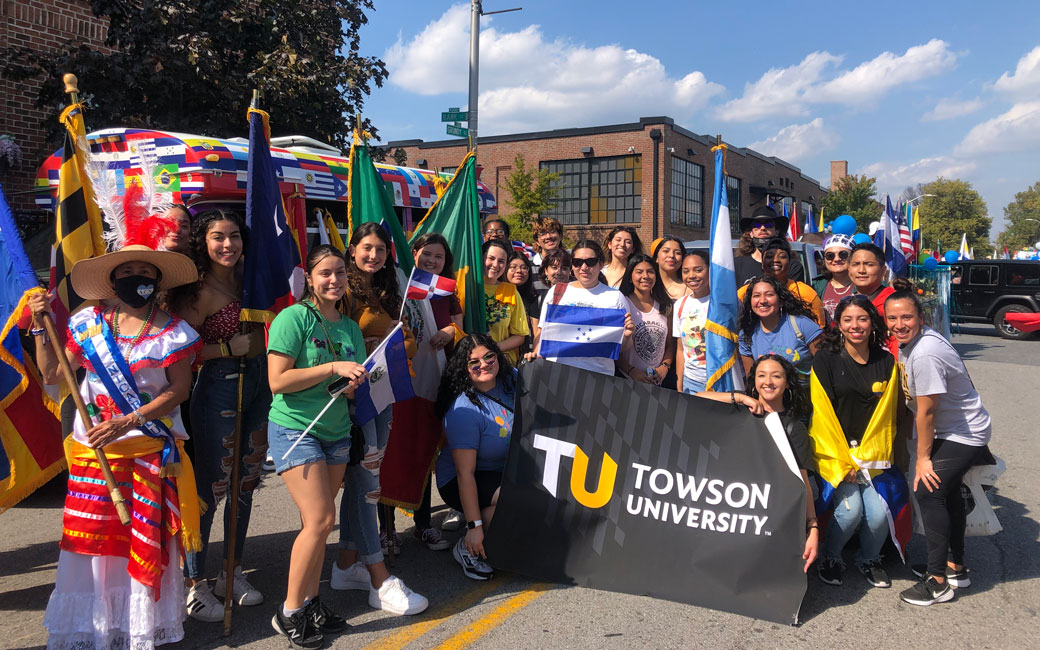The origins of Hispanic Heritage Month
TU celebrates Hispanic/Latinx culture and serves as home to several organizations and student groups
September 25, 2022

Hispanic Heritage Month has been observed in the U.S. each year from Sept. 15–Oct. 15 by celebrating the histories, cultures and contributions of American citizens whose ancestors came from Spain, Mexico, the Caribbean and Central and South America since 1988. But the origins of the celebration go back much earlier to the civil rights movement in the 1960s and Latin American independence in the first half of the 19th century.
Hispanic Heritage Month’s civil rights origins
“The idea emerges in the 1960s during the civil rights movement,” explains Marcio Siwi, an assistant professor of history whose research focuses on Latin American studies, urban studies and race and national identity. A native of São Paulo, Brazil, Siwi is a citizen of both Mexico and the United States and teaches courses in Latin American studies at TU.
“While we tend to focus on the African American civil rights movement in that era, for very good reason, there is a huge Latino/Hispanic—or at the time what is called the Chicano—movement, featuring important labor and civil rights organizers like Cesar Chavez and Dolores Huerta, who much like their African American counterparts felt like their civil rights were being violated and they were not being treated fairly.”
During this moment of activism, the first origins of the national celebration begin with a resolution from California Congressman George E. Brown, who represents a largely Latinx district, authorizing President Lyndon Johnson to designate Hispanic Heritage Week annually in September.
By 1988, the celebration was expanded from a week to a month under President Ronald Reagan.
Ties to Latin American independence
The dates of Hispanic Heritage Month coincide with important anniversaries and celebrations in Latin America. “There's a symbolism to it, because mid-September is when many Latin American countries first gain their independence in the 1800s. There are seven Latin American countries that gain their independence in September sometime in the early 1820s to 1830s,” Siwi explains.
Sept. 15 is the anniversary of independence for Costa Rica, El Salvador, Guatemala, Honduras and Nicaragua. Mexico and Chile celebrate their independence days on Sept. 16 and Sept. 18, respectively. Additionally, Día de la Raza, celebrated in many Spanish-speaking communities on Oct. 12, honors and recognizes the many cultures that were colonized by Europeans.
“The celebration makes a lot of historical sense, because there is a lot of research that shows just how enthusiastic American society was in the early 1800s when Latin America gained independence,” Siwi adds. “It actually became quite common for Americans to use the name of the heroes of Latin American independence—Simon Bolivar and others—to name their children and to name towns and cities. So there are many cities here in the United States, including Maryland, called Bolivar.”

Hispanic/Latinx groups on campus
With more than 1,700 students who identify as Hispanic/Latinx, TU is home to several organizations and student groups.
“Raising awareness in these populations and just providing a space for them is essential,” says Idania Ramos, a graduate assistant for the Center for Student Diversity and an advisor to the Latin American Student Organization (LASO) at TU. “Feeling like an outsider sucks, and if you're able to find your community, if you're able to find a group of people that make you feel safe, that make you feel heard and understood, that can help as you navigate all the difficulties of college.”
Gabriel Ortiz, a senior studying mass communication and the president of the Pasíon Dance Team at TU, says “Hispanic Heritage month means everything to my community, and especially to the club.”
During a fundraising event for the club on Sept. 21, Antonio Ayala Alvarado, a senior studying psychology and a dance team captain, added that the celebration provides needed visibility.
“Hispanic Heritage Month means that people have the opportunity to get to know the culture,” Ayala Alvarado says. “It’s so important to have these communities on a college campus because people move away from home and it's a way for them to feel welcome.”
Latin American Student Organization (LASO)
LASO is a Latinx-based organization focusing on leadership development, community involvement, mentorship and connections with other like-minded students regardless of race/ethnicity/background while embracing the Latinx culture. LASO holds weekly Wednesday meetings from 5–6 p.m. in Linthicum Hall room 224.
Pasíon Dance Team
Pasíon Dance Team teaches the basics of dance styles like merengue, bachata, punta and more while having fun and learning about the styles and culture. The club also aims to collaborate with other Latin heritage clubs and organizations to create a community on campus. Dancers of all levels meet every Tuesday at the University Union room 222 at 8 p.m.
Association of Latino Professionals for America
This organization strives to empower and develop members of the Latinx community as leaders of character for the nation in every sector of the global economy. This group focuses on professional development, networking and other skills making its members competitive for the job market post-graduation. The group meets Tuesdays from 7–8 p.m., via Zoom.
Latine/x Student Development Program
The Latine/x Student Development Program within the Center for Student Diversity works to recruit, engage, retain and graduate students from Latine/x backgrounds and to ensure their academic, sociocultural, personal and professional success.